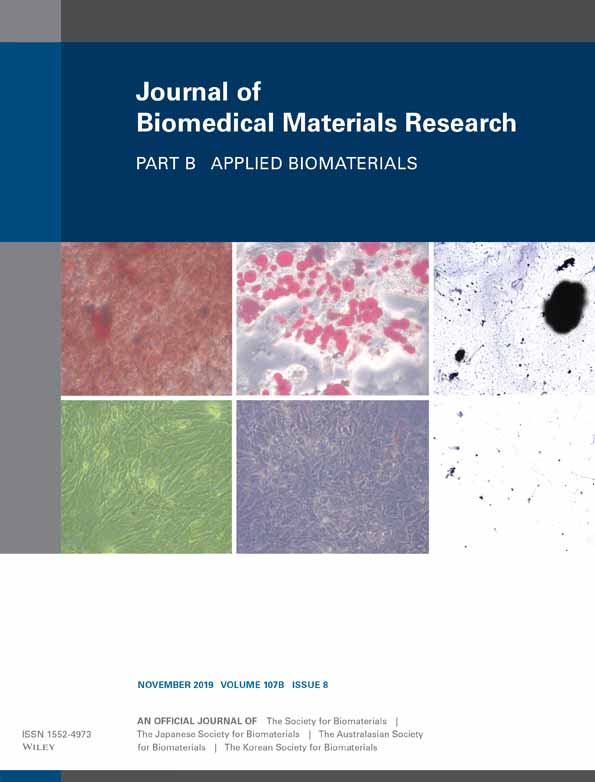Impact of trivalent ions on the stability and cohesion of calcium polyphosphate coacervates for embolization applications
Abstract
Polyphosphates (PPs) are of interest as temporary in situ setting embolic agents for which cohesive characteristics are vital. Trivalent ions Al3+ and Ga3+ were substituted into calcium PP up to 10 mol % for two PP chain lengths (degree of polymerization, Dp 200 and 9000) and the effect on the dissolution rate of the resulting coacervate was examined. High levels of trivalent ions were found to increase the dissolution rate, especially with aluminum (Al) where the coacervate with the greatest Al content (10 mol %) and larger Dp completely dissolved within the first few hours in tris(hydroxymethyl)aminomethane buffered saline. Conversely, small amounts of trivalent ions slowed the dissolution rate of the coacervates compared to those containing calcium only. The coacervate compositions determined to have the fastest and slowest ion release were evaluated for cohesion upon injection into a simulated blood vessel using a dual lumen needle. PPs with lower trivalent content had a higher coacervate yield overall, with 5% Ga and Dp 200 yielding the smallest proportion of coacervate particulates that could be implicated in unwanted distal embolization. However, further studies are required to evaluate the formation and duration of occlusions in vivo so that the PP composition can best be tailored to meet clinical requirements. © 2019 Wiley Periodicals, Inc. J Biomed Mater Res Part B: Appl Biomater 107B:2638–2648, 2019.




